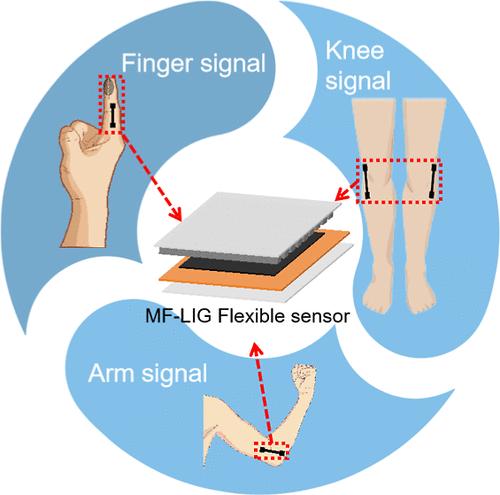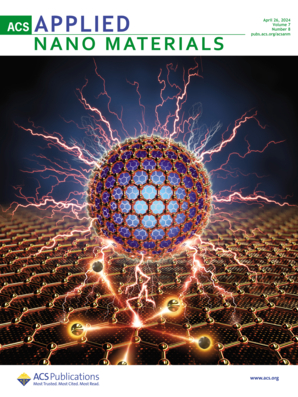Expanding Laser-Induced Graphene and Polydimethylsiloxane Microstructure Flexible Sensor: Innovative Design and Application Research Inspired by Fingerprint
IF 5.3
2区 材料科学
Q2 MATERIALS SCIENCE, MULTIDISCIPLINARY
引用次数: 0
Abstract
In recent years, wearable flexible sensors have garnered significant attention for their potential in monitoring human physiological signals. Current research focuses on flexible sensors with a wide linear range, high sensitivity, and excellent reliability. Micronanostructures have been introduced to balance these three features to some extent. Inspired by the micronanostructures of human fingerprints, we propose a fingerprint-like flexible sensor that combines polydimethylsiloxane with a grating structure and laser-induced graphene. This fingerprint-like flexible sensor exhibits several desirable characteristics: a wider linear range (0–180°), faster response time (0.3 s), higher sensitivity (688.5 kPa–1), and excellent reliability (>10,000 cycles). These features make fingerprint-like flexible sensors particularly suitable for detecting various human physiological signals, including finger flexion, elbow flexion, finger pressure, and pulse. Therefore, there is considerable potential for integrating multiple fingerprint-like sensors into human physiological signal monitoring applications. This approach offers a promising direction for the future development of wearable flexible sensors.

扩展激光诱导石墨烯和聚二甲基硅氧烷微结构柔性传感器:受指纹启发的创新设计与应用研究
近年来,可穿戴柔性传感器因其在监测人体生理信号方面的潜力而备受关注。目前的研究重点是具有宽线性范围、高灵敏度和出色可靠性的柔性传感器。微纳结构的出现在一定程度上平衡了这三个特点。受人体指纹微纳结构的启发,我们提出了一种类似指纹的柔性传感器,它结合了具有光栅结构的聚二甲基硅氧烷和激光诱导石墨烯。这种类指纹柔性传感器具有几个理想特性:更宽的线性范围(0-180°)、更快的响应时间(0.3 秒)、更高的灵敏度(688.5 kPa-1)和出色的可靠性(10000 次循环)。这些特点使得类似指纹的柔性传感器特别适用于检测各种人体生理信号,包括手指弯曲、肘部弯曲、指压和脉搏。因此,将多个类指纹传感器集成到人体生理信号监测应用中具有相当大的潜力。这种方法为可穿戴柔性传感器的未来发展提供了一个前景广阔的方向。
本文章由计算机程序翻译,如有差异,请以英文原文为准。
求助全文
约1分钟内获得全文
求助全文
来源期刊

ACS Applied Nano Materials
Multiple-
CiteScore
8.30
自引率
3.40%
发文量
1601
期刊介绍:
ACS Applied Nano Materials is an interdisciplinary journal publishing original research covering all aspects of engineering, chemistry, physics and biology relevant to applications of nanomaterials. The journal is devoted to reports of new and original experimental and theoretical research of an applied nature that integrate knowledge in the areas of materials, engineering, physics, bioscience, and chemistry into important applications of nanomaterials.
文献相关原料
| 公司名称 | 产品信息 | 采购帮参考价格 |
|---|
 求助内容:
求助内容: 应助结果提醒方式:
应助结果提醒方式:


